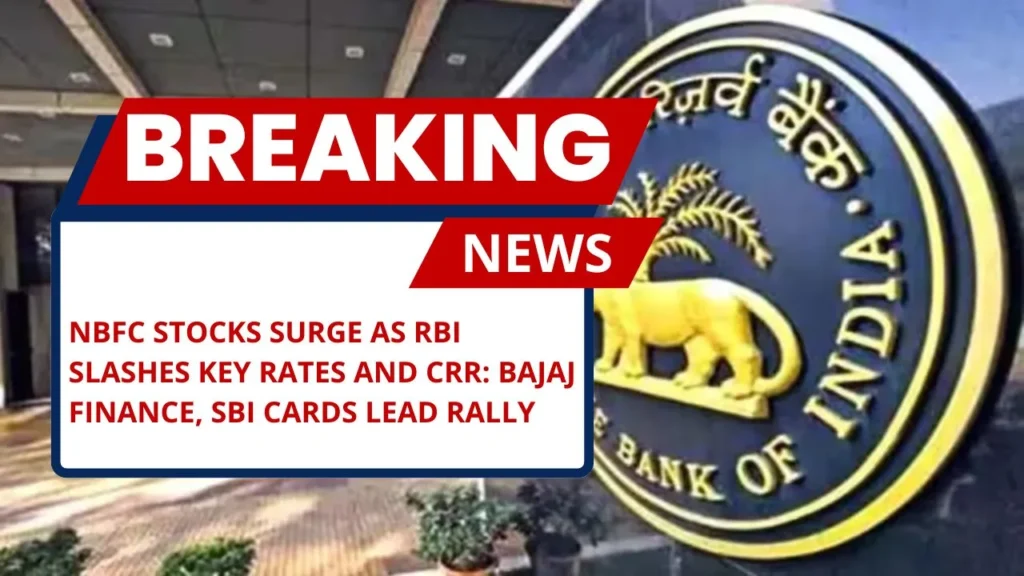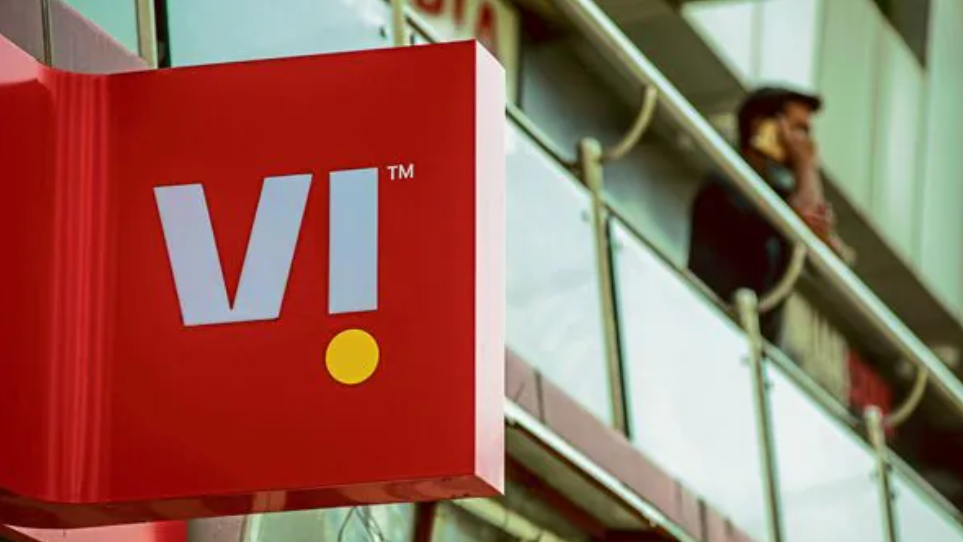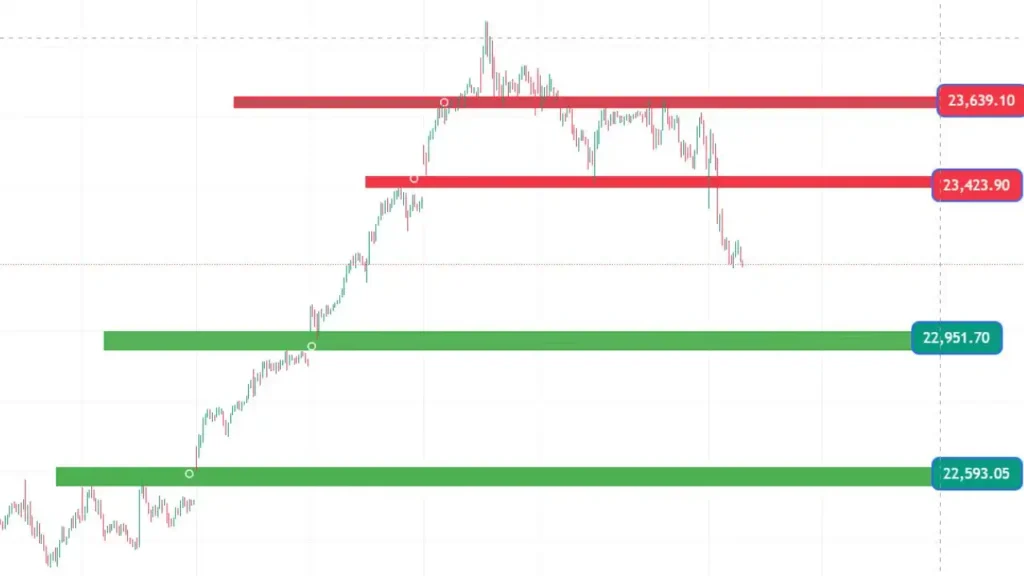On June 6, 2025, there was great news for non-banking financial companies (NBFC Stocks). The Reserve Bank of India (RBI) cut the policy repo rate by 50 basis points (bps) and reduced the cash reserve ratio (CRR) by 100 bps. After this, the shares of big players like Bajaj Finance, SBI Cards and Shriram Finance saw a rise.
The Monetary Policy Committee (MPC) of RBI, headed by Governor Sanjay Malhotra, changed its stance from ‘accommodative’ to ‘neutral’. This clearly shows that now RBI is going to try to strike a balance between economic growth and inflation management.

RBI’s Policy Moves Spark Market Optimism
RBI has reduced the repo rate to 5.5% and also cut CRR—in four tranches, each by 25 bps, starting from September 6 and ending November 29. This decision has given a new impetus to the financial markets. The CRR cut will inject more liquidity into the banking system, which will enable NBFCs and banks to lend more aggressively, especially in the retail and small loan segments. This is a relief for the NBFC sector, which has been facing difficulties due to rising interest rates and regulatory scrutiny on unsecured lending.
Governor Sanjay Malhotra said in his post-MPC speech that the stress in the unsecured personal loan and credit card portfolios has reduced significantly. He said, “The pressure in retail segments such as unsecured personal loans and credit card receivables has reduced, although challenges still remain in the micro-finance segment.” Malhotra also said that banks and NBFCs are now readjusting their business models, tightening credit underwriting standards and strengthening collection efforts to mitigate future risks.
NBFC Stocks Shine: Bajaj Finance, SBI Cards Hit New Highs
NBFC stocks rallied following the RBI announcement, with the Nifty financial services index rising nearly 1.3% to 26,733. Leading the pack was SBI Cards & Payment Services, which jumped 4% to hit a 52-week high of Rs 982, reflecting investor confidence in its credit card portfolio. NBFC sector heavyweight Bajaj Finance also rallied nearly 4% to trade at Rs 9,256.50.
Other NBFC stocks also joined the rally—Shriram Finance jumped 4% to Rs 678, while Mahindra & Mahindra Financial Services gained over 3% to trade at Rs 271. Cholamandalam Investment & Finance Company and Aadhar Housing Finance gained over 2%, while Poonawalla Fincorp and RBL Bank were both up over 1.5%. Aditya Birla Capital also added a marginal gain of 1.3%.
Also Read: HDFC Share Price Surges to New Highs on June 6, 2025: A Deep Dive into Its Stellar Performance
Why NBFCs Are in the Spotlight
RBI’s rate cut and reduction in CRR are especially important for NBFCs, as these companies depend heavily on borrowing from banks for their lending business. Lower interest rates reduce their cost of borrowing, allowing them to offer competitive loan rates to customers and also improve their margins. Also, the reduction in stress in unsecured loans and credit card portfolios has improved the lending environment, especially for companies like SBI Cards and Bajaj Finance, which have large exposure to these segments.
However, RBI’s warning that stress still persists in the micro-finance segment indicates the need for NBFCs to remain cautious. Governor Malhotra said that companies are already taking steps to control risk such as strengthening the credit assessment process and improving debt recovery mechanisms.
Why is this good news for the NBFC sector?
NBFC companies borrow from banks and give loans. The reduction in repo rate will reduce their borrowing cost, which will enable them to give loans to customers at a lower interest rate and their profit margin will improve. Also, companies like SBI Cards and Bajaj Finance will benefit from the improvement in the unsecured loan and credit card segment.
But RBI has still pointed out problems in the micro-finance sector, so NBFCs will have to be cautious in this segment.
RBI’s long-standing concern about unsecured loans
RBI has repeatedly warned about the rapidly growing size of unsecured loans. These loans are more risky because they do not have any collateral. In February 2025, RBI Deputy Governor M. Rajeswara Rao warned about “excessive borrowing in unsecured loans and enthusiasm for derivatives in the capital market”. RBI’s latest comments suggest that even though there has been some improvement in stabilizing the portfolio of unsecured loans, the micro-finance sector is still facing difficulties, which needs to be monitored.
What’s next for NBFCs?
NBFCs are going to benefit from the easing of RBI policy, especially those whose business model is strong and whose portfolio is diversified. Analysts believe that companies like Bajaj Finance, SBI Cards and Shriram Finance will be able to take advantage of better liquidity and low interest rates. RBI’s ‘neutral’ stance also shows that it is maintaining a balance between supporting economic growth and keeping inflation under control. This can maintain investor confidence in the financial sector.
For investors, the rise in NBFC stocks gives an opportunity to re-evaluate their exposure to this high-growth sector. However, RBI’s focus is still on prudent lending, so NBFCs will have to keep their risk management system strong only then they will be able to maintain this growth.
Conclusion
RBI’s bold decisions on June 6, 2025 have raised new hopes in the NBFC sector. The rise in shares of companies like Bajaj Finance, SBI Cards and Shriram Finance is proof of this. As liquidity improves and the cost of borrowing decreases, NBFCs are expected to grow, provided they remain cautious in challenging segments like micro-finance. At the moment, the positive market reaction shows that the sector is ready to take advantage of the supportive steps taken by RBI.
Disclaimer: This article is for informational purposes only and is not financial advice. Consult a qualified financial advisor or broker before investing.


